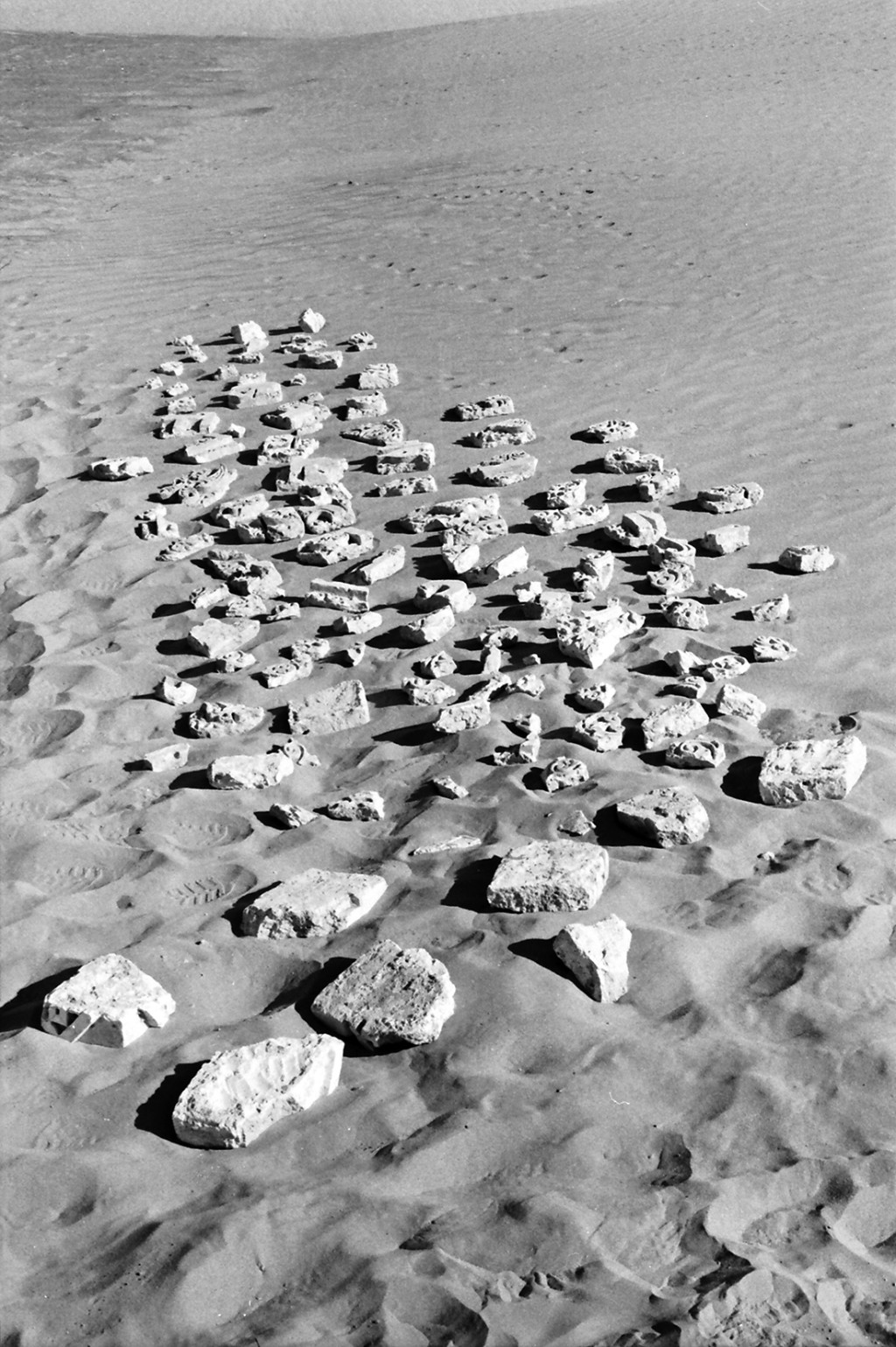
The Mosque Inscription
The existence of a mosque at the northern part of the Circular Enclosure surrounding the Citadel of Shahr-i Gholghola has been known since the visit of French archaeologists in 1936. We spent much of the 1972 season excavating it. Hoards of coins found stuck into cracks in the mosque wall on the commercial street bordering it indicated there was a need to hide their wealth from some danger. The last date of those coins, 1222 CE, matched the known date of the invasion of Sistan by Genghiz Khan’s armies. But despite his reputation for violence and destruction, the walls, columns, and decorations of the mosque were largely intact … with one exception. The large Koranic mudbrick inscription that likely covered one wall of the mosque had been torn down and smashed into thousands of small pieces. These were scattered in and near the mosque but in fragments so small that we could not reconstruct the text of the inscription that once graced the wall. This was not a case of an abandoned mosque having pieces slowly collapse and fall to the ground. No, it was a deliberate smashing of the inscription. The Mongol armies seem to be the only logical culprits and, along with the coinage, provide the best evidence of Mongol conquest of Sistan.


